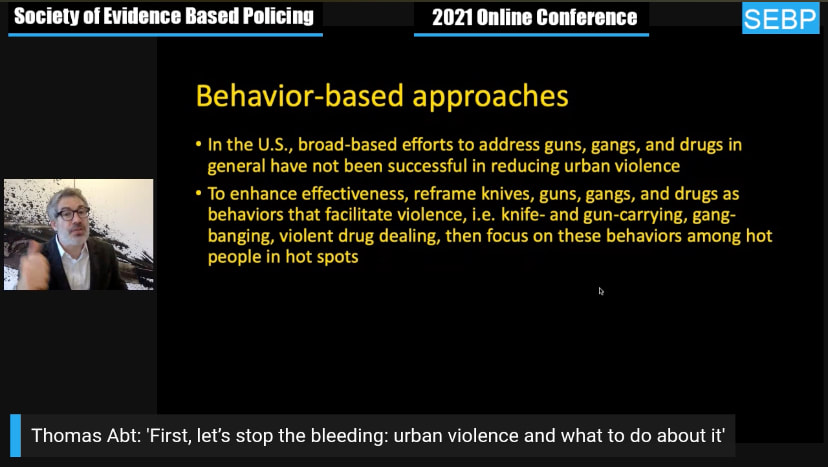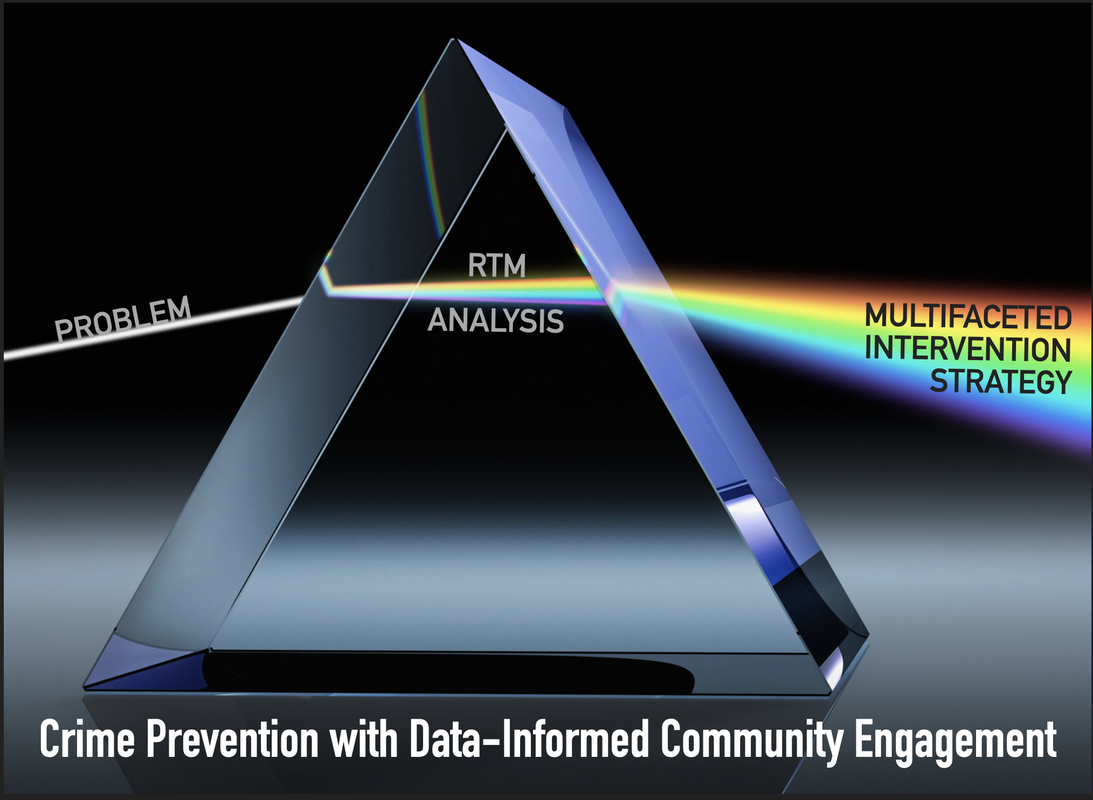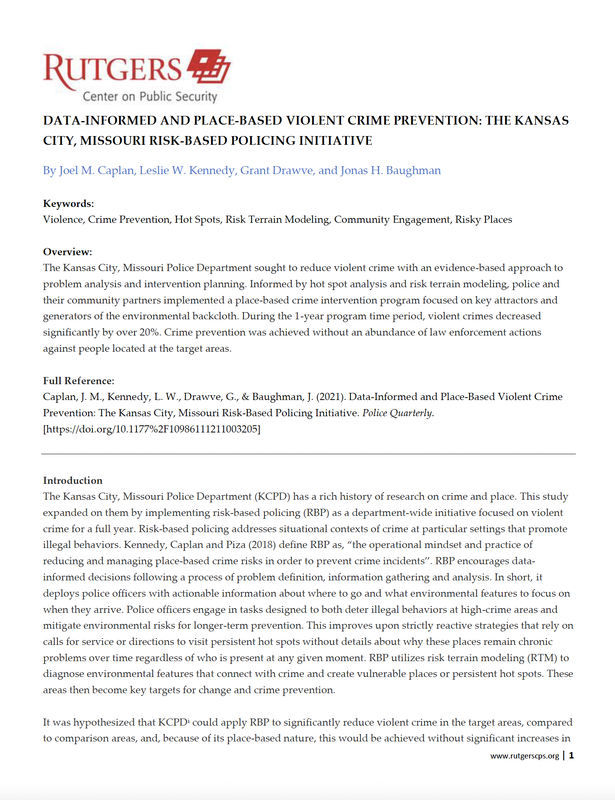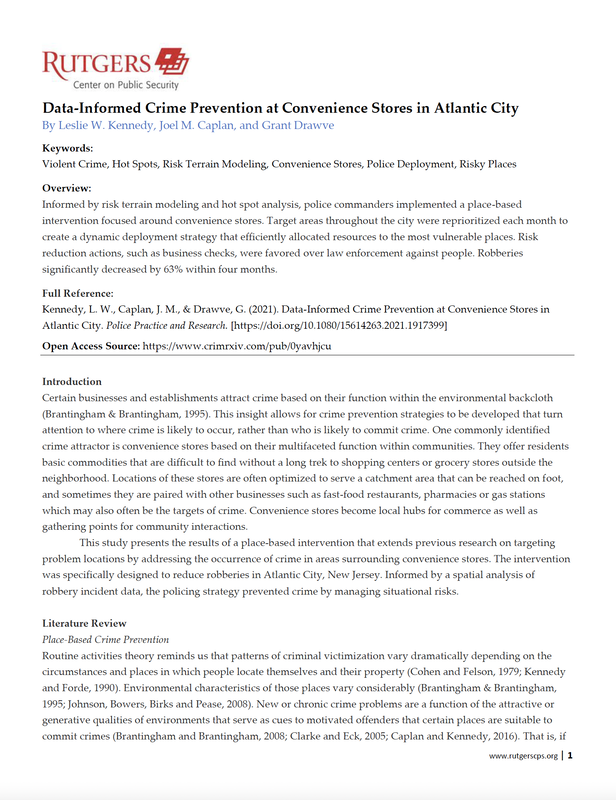|
At the Society for Evidence-Based Policing 2021 Virtual Conference, Thomas Abt explained how violence reduction efforts can be enhanced if the focus is taken off the guns, knives or drugs themselves, and instead placed on the illegal behaviors; that is, gun-carrying, knife-carrying and drug dealing. This can open new avenues for intervention with a focus on the illegal behavior settings. Crime hot spots are chronic illegal behavior settings Crime hot spots are chronic illegal behavior settings. We can diagnose their attractors and generators of illegal behavior with Risk Terrain Modeling (RTM), then aim to change the ways these places influence or enable interactions of people that result in repeated crime outcomes.
But in contrast to Abt's recommendation to focus on people in hot spots, the focus of crime prevention with RTM turns to the places themselves and not directly on people at all. There’s a synergy of place-based approaches to crime prevention informed by RTM and considerations of criminal behaviors because some settings are likely attracting or promoting these behaviors more than others. This 'illegal behavior-setting' framework incorporates the role of personal preferences for crime. That is, how individual persons select and use the environments that they occupy and the impact this has on crime outcomes. It views behavioral outcomes as a function of a dynamic interaction among people that occurs at places. We can analyze why human interactions at particular places result in repeated crime outcomes. We can better understand the situational contexts for crime that routinely occur at high-crime settings. It's well known that crimes cluster and hot spots form. Hot spots are symptoms of chronically problematic places. Crimes are the outcomes of illegal behaviors. Particular features of the landscape concentrate or interact to create unique behavior settings for crime. With RTM we can diagnose environmental features that connect with crime and that create vulnerable places or persistent hot spots. Then multiple stakeholders can intervene to address the collective influences of environmental features that attract illegal behaviors as part of an approach to crime prevention. There’s compelling evidence to focus on certain types of environmental features at chronically crime-prone places. Abt's argument to consider behaviors, makes the emphasis on place even more pertinent. A prism serves as a good analogy for Data-Informed Community Engagement, or DICE. DICE can be a strategy for community policing and spearheaded by a police department. It can also be a city’s violence reduction plan run out of City Hall or by a community partner. The glass prism separates light into its component parts. Through the rainbow that emerges we see the full spectrum of colors and the role that each one of them plays in creating visible light. That is, we can observe visible light, but need a prism to see its component parts. With DICE, we notice an emerging or persistent crime problem, and use risk terrain modeling (RTM) analysis to diagnose its contributing factors. Then we share this information with multiple stakeholders who coordinate their own existing resources to intervene by doing what they do best at the places that need them most. While everyone’s initiatives may appear separate from one another, they combine to produce a deliberate and impactful response to crime problems throughout the city because they’re all acting on the same information to guide their plans and actions. The result is a comprehensive and sustainable crime prevention strategy, with policing just one part of the larger effort. DICE can be a strategy for community policing and spearheaded by a police department. It can also be a city’s violence reduction plan run out of City Hall or by a community partner. In his essay on the Quality Police blog, Joel Caplan discusses DICE in more detail. It introduces you to data analysis with risk terrain modeling and presents case studies that have made RTM actionable by sharing the burden of crime prevention and public safety with multiple local leaders. Related Readings (Open Access)
|
|
|
The official website of Risk Terrain Modeling (RTM) research and resources, based out of Rutgers, The State University of New Jersey.
|





 RSS Feed
RSS Feed